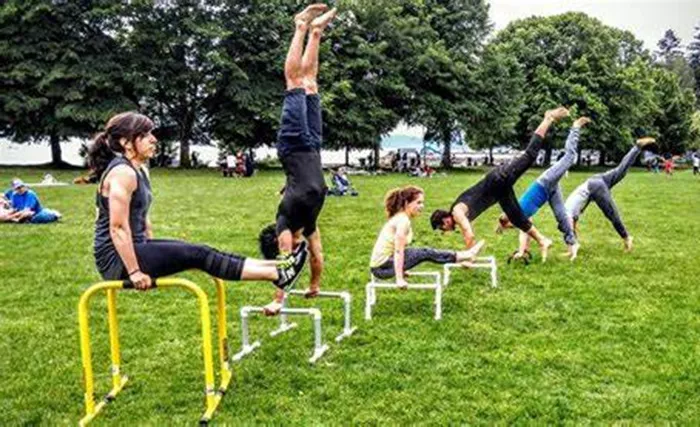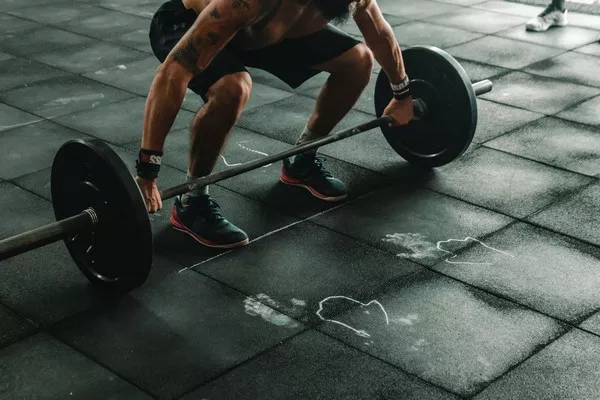In the world of fitness, High-Intensity Interval Training (HIIT) has taken the spotlight as one of the most effective ways to achieve rapid improvements in cardiovascular health, burn fat, and build muscle endurance. It’s no secret that traditional cardio workouts, like jogging or cycling, have been popular for decades. However, HIIT provides a more time-efficient and often more powerful approach to fitness. Whether you’re looking to shed fat, build strength, or simply challenge your body in new ways, HIIT can help you reach your goals faster and more effectively. In this article, we will explore what HIIT is, how to implement it into your fitness routine, and the wide-ranging benefits it offers.
What Is High-Intensity Interval Training (HIIT)?
High-Intensity Interval Training (HIIT) is a form of exercise that alternates between short bursts of intense activity followed by brief periods of rest or low-intensity activity. The aim is to push your body to its maximum capacity during the high-intensity phases and then allow it to recover slightly during the rest periods. These intervals are typically short, ranging from 20 seconds to a minute of intense work, followed by equal or shorter periods of rest.
The beauty of HIIT lies in its versatility and adaptability. You can incorporate it into various types of exercises, such as running, cycling, bodyweight movements, or strength exercises. HIIT can be customized to suit any fitness level, and it doesn’t require hours in the gym. Whether you’re a beginner or an advanced athlete, you can tailor your HIIT workouts to match your current capabilities and fitness goals.
The Science Behind HIIT
The key to HIIT’s effectiveness lies in the intensity of the workout and the way it affects the body. When you perform high-intensity exercises, your body uses both anaerobic (without oxygen) and aerobic (with oxygen) energy systems. This creates an energy demand that is much greater than that of traditional steady-state cardio exercises like jogging. As a result, HIIT has been shown to improve cardiovascular fitness, increase muscle strength, and elevate metabolism.
HIIT workouts also lead to the “afterburn effect” or Excess Post-Exercise Oxygen Consumption (EPOC). This means that your body continues to burn calories at an elevated rate even after the workout has ended, allowing for increased fat loss. Studies have shown that HIIT can boost your metabolic rate for hours after exercise, making it an efficient fat-burning workout.
The Benefits of High-Intensity Interval Training
1. Fat Loss and Increased Metabolism
One of the primary benefits of HIIT is its ability to promote fat loss. Unlike traditional cardio, which burns fat during the workout, HIIT increases your metabolism post-workout, allowing you to continue burning fat even after the session ends. This is largely due to the afterburn effect, where your body needs to restore itself to its normal state, burning extra calories in the process.
Several studies have shown that HIIT can reduce both subcutaneous fat (the fat just under the skin) and visceral fat (fat around the organs), both of which are harmful to your health. Visceral fat, in particular, is linked to chronic diseases like diabetes, heart disease, and hypertension. By including HIIT in your fitness routine, you can tackle belly fat and improve your body composition.
2. Improved Cardiovascular Health
HIIT has been proven to enhance cardiovascular fitness by improving your heart’s ability to pump blood and increasing the efficiency of oxygen use during exercise. The short bursts of intense exercise force the heart to pump faster and work harder, which over time can improve the heart’s endurance and capacity. This makes HIIT an effective workout for individuals looking to boost cardiovascular health while simultaneously burning fat and building strength.
3. Time Efficiency
One of the most appealing aspects of HIIT is its time efficiency. Traditional steady-state cardio exercises like running or cycling can take upwards of an hour to achieve substantial results. In contrast, HIIT workouts are typically completed in 20 to 30 minutes, making them an ideal option for individuals with a busy schedule. Despite the shorter duration, HIIT’s intensity allows you to achieve similar or even greater results in less time.
4. Increased Muscle Endurance and Strength
While HIIT is often associated with fat loss, it also contributes to muscle endurance and strength. Many HIIT workouts incorporate bodyweight exercises, such as squats, lunges, push-ups, and burpees, which engage multiple muscle groups simultaneously. By performing these movements at high intensity, you challenge your muscles, leading to improved endurance and muscle tone. Over time, this can contribute to greater strength and overall athleticism.
5. Boost in Mental Toughness and Resilience
HIIT pushes you to your physical limits, requiring mental focus and determination. The intense bursts of effort and the short recovery periods demand that you push through discomfort, which can build mental toughness and resilience. This mental strength gained from HIIT can also translate into other aspects of life, helping you face challenges with a more positive and determined mindset.
6. Versatility and Customization
Another benefit of HIIT is its versatility. You don’t need expensive gym equipment or machines to get started. HIIT can be done with just your bodyweight or using simple equipment like dumbbells, resistance bands, kettlebells, or even a jump rope. This flexibility makes HIIT accessible to people of all fitness levels, whether you’re working out at home or in the gym.
Furthermore, HIIT can be customized to suit your goals. Whether you want to focus on improving cardiovascular endurance, building strength, or increasing flexibility, you can tailor your intervals and exercises to align with your personal objectives.
How to Achieve High-Intensity Intervals
Step 1: Choose the Right Exercises
The first step in creating an effective HIIT workout is selecting the exercises that you will perform during your high-intensity intervals. You can choose from a variety of exercises, such as sprints, cycling, jumping jacks, burpees, push-ups, mountain climbers, or squat jumps. It’s essential to pick exercises that target different muscle groups and allow you to reach your maximum effort during the high-intensity phase.
If you’re a beginner, start with basic bodyweight exercises, such as squats, lunges, and push-ups. If you’re more advanced, you can incorporate more complex movements like kettlebell swings, box jumps, or battle ropes to increase the intensity.
Step 2: Structure Your Intervals
HIIT workouts are all about alternating between periods of high-intensity exercise and active recovery. A typical HIIT workout might consist of 30 seconds of intense exercise followed by 30 seconds of rest, but the exact duration can vary depending on your fitness level and goals.
For beginners, you might start with a 1:2 ratio, meaning you would work for 20-30 seconds and then rest for 40-60 seconds. As you become more conditioned, you can increase the work-to-rest ratio to 1:1 or even 2:1 to increase the intensity.
Step 3: Warm Up and Cool Down
Just like any other workout, warming up and cooling down are essential when doing HIIT. A proper warm-up prepares your muscles and cardiovascular system for the intense activity ahead, while a cool-down helps your body return to its resting state and prevents injury.
A good warm-up should include dynamic stretches and movements that engage the muscles you plan to work during your HIIT workout, such as leg swings, arm circles, and light jogging. Similarly, a cool-down should include static stretches and deep breathing exercises to help relax the muscles and reduce soreness.
Step 4: Rest and Recovery
Rest and recovery are critical components of any fitness routine, especially HIIT. The high intensity of HIIT places a lot of stress on your body, so it’s important to give your muscles adequate time to recover. Aim for at least one rest day between HIIT workouts, or incorporate low-intensity activities such as walking, yoga, or swimming to allow your body to recover.
Step 5: Progress Gradually
As you progress in your fitness journey, you should aim to gradually increase the intensity, duration, or frequency of your HIIT workouts. This could mean increasing the work interval, reducing the rest period, or adding more sets to your routine. By continually challenging your body, you ensure that you make steady progress and continue to see improvements in your strength, endurance, and fat loss.
Conclusion
High-Intensity Interval Training (HIIT) is a powerful, time-efficient workout that offers numerous benefits, including fat loss, improved cardiovascular health, increased muscle endurance, and greater mental resilience. By pushing your body to its limits with short bursts of intense exercise followed by brief recovery periods, HIIT allows you to achieve maximum results in minimal time.
To successfully incorporate HIIT into your routine, choose exercises that engage multiple muscle groups, structure your intervals with appropriate work-to-rest ratios, and focus on consistency. With dedication and proper recovery, HIIT can be an essential part of your fitness regimen, helping you unlock your full potential and achieve your health and fitness goals.
Related Topics





























